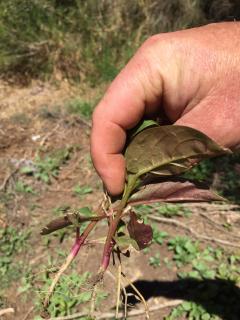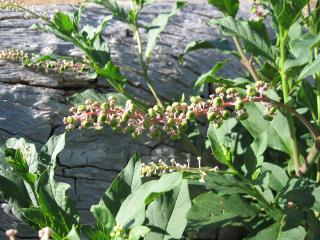The Department of Primary Industries and Regional Development has welcomed the support of South West residents in joining the search for a new invasive weed.
The department issued an alert in December for residents to look out for pokeweed (Phytolacca Americana) and report any sightings after it was found in the Balingup area.
Pokeweed is an agricultural and environmental weed, and is toxic to livestock and people.
Department invasive species manager Kay Bailey said the department had received more than 20 reports by landowners and residents.
“All reports have been investigated and 16 reports have been confirmed as pokeweed, which have been treated,” Ms Bailey said.
“The landowners involved and the general community have been very helpful and pro-active.
“Willingness to look for, report and control the plants by individual residents has contributed to all known plants being controlled and preventing potential spread of this serious pest.”
Government landowners in the region, including the Forest Products Commission, Department of Biodiversity, Conservation and Attractions, Main Roads Western Australia and the Shire of Donnybrook/Balingup, are actively surveying their land and undertaking control.
Ms Bailey said while all known plants had been removed, the department urged residents to continue to report any sightings.
“This will be a long term program to eradicate the seed bank for pokeweed. Plants may grow in areas not previously seen, from seed deposited by birds,” Ms Bailey said.
She said community reporting had recently led to the first detection of the plant in Bridgetown.
“Although surveillance of the surrounding area did not find any further plants, Bridgetown residents are reminded to be on the lookout,” she said.
Pokeweed looks similar to inkweed, a widespread weed in the South-West, but is taller with larger leaves and drooping berry stalks.
It is a large, perennial shrub that grows up to 2.5 metres tall, with bright green leaves (up to 40 cm long) on a smooth purplish stem.
White to magenta flowers form in elongated clusters that hang from the branches. Deep purple to black berries form in summer and are the most distinctive characteristic of pokeweed.
People who suspect they have seen pokeweed should report it to the department by using the MyPestGuide™ Reporter app, or contact the department’s Pest and Disease Information Service on (08) 9368 3080 or email padis@dpird.wa.gov.au.
More information is available from the department website.
Media contacts: Jodie Thomson/Lisa Bertram, media liaison +61 (0)8 9368 3937


